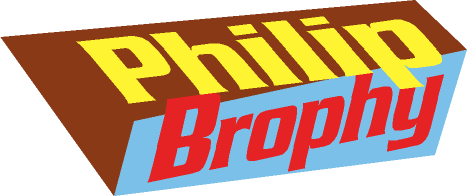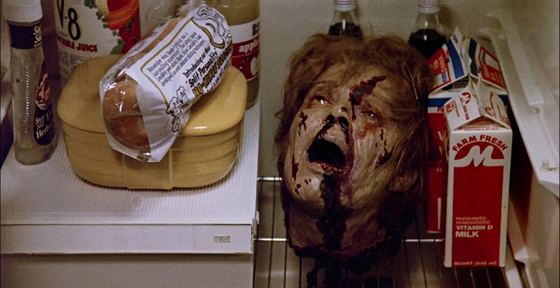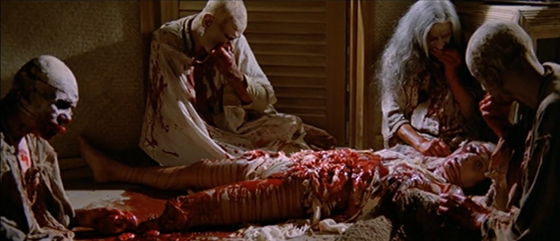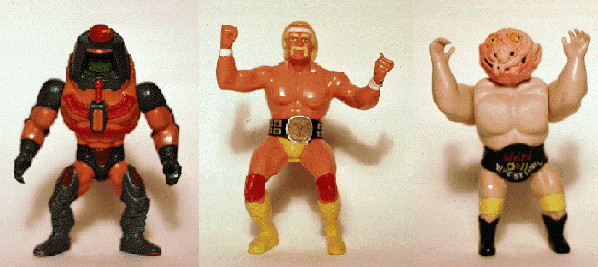Showing off the junk of our visual culture: Philip Brophy
published in Sydney Morning Herald - Saturday July 9th © 1988Interview by Susan Charlton
Melbourne filmmaker and visual artist Philip Brophy has a passionate interest in history’s images of sex and violence. He tells the story of the 1908 film The Great Train Robbery, which comprised only nine camera shots (plus a tenth, when the barrel of a gun was fired at the audience, leaving a cloud of smoke).
This had a profound effect on audiences of the time, who were new to the idea of human images moving on the screen. Cinema owners were given the opportunity to show three versions of the film: one with the gun firing at the beginning, one with the gun at the end, and for good measure, one with the gun at both ends.
Brophy thus illustrates that violent and shocking images have been part of cinema entertainment from its inception, and that marketing companies have always been very inventive in describing these scenes to the public. In effect, Brophy wants to clear away the gun smoke and take and informed look at what is actually happening in movies and other forms of visual culture.
As parliamentarians from around Australia meet to review film and video censorship classification in the light of a new Federal Parliamentary report on the subject, Philip Brophy is coordinating an evening titled Trash & Junk Culture - An All-Consuming Consumption as the second in a series of media nights at the Performance Space.
He is well placed to organise such an event. Apart from teaching a media course on exploitation — which looks at popular forms of literature pornography cinema and censorship — he is an avid collector of 20th century cultural artefacts. His Melbourne home, shared with collaborator Maria Kozic, is renowned for its exhaustive collection of videos records, toys, comics and magazines.
He has put together the Performance Space show with the same zealous archival approach. He and his colleagues, Kozic and Ian and Andrew Haig, plan an exhibition that will include 140 slide images of “victim” toys, 240 scenes edited from so-called “video nasties”, a selection of images from specialist pornographic magazines, and 70 slides of “the most outrageous examples of cinema advertising and posters”.
Brophy says: “I will be really upset if the audience has seen all these images before. I am presuming that most people haven’t actually had a chance to examine these objects that cause so much hysteria on the one hand and enjoyment on the other. It’s a deliberate case of overload on our part; not to be confrontational, but more as a tongue-in-cheek educational display. Rather like the Egg Board might organise.”
He can be a Jekyll and Hyde. As a fan, he finds it extremely difficult to argue seriously with those outraged citizens whose extreme opinions fill talk-back radio. On the other hand, he can be extremely serious and thorough, writing disciplined theoretical essays on behalf of exploitation cinema for local and international film journals.
The Performance Space program will also include two talks by Brophy that attempt to contextualise the range of images shown. In the first, he traces the development of mass circulation popular literature—from Gothic novels of the last century to Mad magazines in the 1950s. In his second talk, Brophy gives a historical account of changing conceptions of what constitutes a pornographic image.
“I believe that most people are aware of the complexities of issues,” he says. “Rather than accepting hostile points of view they tend to step back a little and observe. Most of the public outrage that occurs seems highly orchestrated; often outrage is deliberately sort out to draw attention to particular films and toys. At the Performance Space, we want to set up a situation where people get a chance to critically evaluate some of these objects for themselves.”
Brophy was recently the subject of a minor controversy at the Sydney film Festival. His latest film — Salt, Saliva, Sperm & Sweat — was a finalist in the Greater Union awards for short Australian films, but one judge registered her descension from the majority vote to include it in the final four. The film prompted mixed reactions — emphatic clapping or loud hisses—from the audiences at the State Theatre.
On one level, the 15 minute film methodically describes the absolute degradation of everyday life through the demise of and inocculous clark; on another, it theorises about the nature of the human body. It stood out visually and philosophically from this year’s batch of bland Australian productions.
Interestingly, it shared the Melbourne Film Festival’s Irwin Rado Award for best short Australian film with Eeelemain, by aboriginal filmmaker Larraine Maafi Williams. Salt, Saliva, Sperm & Sweat will also run for a season with another Brophy project, No Dance, at the Mandolin Cinema from the end of the month. Brophy does not want to be seen as an uncritical promoter of exploitation cinema, although he says there are lots of job opportunities for someone who does. Marketing companies and current affairs programmes love a quick, scandalous point of view. Brophy knows what he doesn’t like and can tell you why: “Some films try to follow a particular formula, but they don’t get it quite right; they try hard to be perverse and absurd, but the comedy is not funny and their horror is not repulsive. And vice versa. They only have a superficial understanding of the genre and its fans.” No one can say that Brophy’s understanding is superficial; it is backed by years of viewing, reading and collecting.
He might also be known to other audiences as a musician, having played with bands as diverse as Melbourne’s Olympic Sideburns, with its garage band sound, and → ↑ → (for whom he provided an extremely cerebral disco beat). With Brophy, you know you can expect the unexpected.
Text © Susan Charlton. Images © Philip Brophy.






